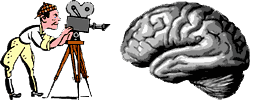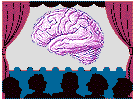 | Hollywood "Comas" Inaccurate Portrayal of Coma in Film |
 May 16, 2006
May 16, 2006Several years ago, researchers showed that the film industry does a poor job representing the true nature of amnesia. According to a paper in the journal Neurology written by neurologist Dr. Eelco Wijdicks and his son Coen Wijdicks, the film industry also portrays coma inaccurately. The Wijdicks reviewed 30 movies that had actors pretending they were in a coma. They studied the actor-patient appearance and the cause, treatment and length of the coma. People without a medical background also viewed scenes from several movies to determine if they could identify inaccuracies in the films and whether they were influenced by what they saw. In the 30 films, a coma was caused most often by a car crash (11 films; 33%), gunshot wound (4 films; 13%) or violent brain injury (4 films; 13%). Most of the movies (19/30, 63%) were rated R; only 7 films (23%) were rated PG-13 and 3 (10%) were rated PG. One film (3%) was not rated. "Hollywood" comas had several problems:
Nonmedical people who viewed scenes from the films were not always able to identify inaccuracies. For example, 22 (31%) of these people believed that a person in a coma could tap out Morse code. Moreover, 28 (39%) of the nonmedical people said that the films would influence their decisions about the care of a family member in a coma. The film industry is in the entertainment business. Moviemakers often take liberties with fact to advance a story and to stir up emotions. People should remember that movies are fiction -- they should not look to Hollywood for facts about science and medicine. |
Reference and further information:
Examples of reviewed movies with patients in a coma: Paparazzi, 2004 | Uptown Girls, 2003 | Blind Horizon, 2003 | Kill Bill Volume 1, 2003 | Swim Fan, 2002 | Monkey Bone, 2001 | Dream Life of Angels, 1998 | Dave, 1993 | Reversal of Fortune, 1991
|
| GO TO: | Neuroscience In The News | Explore the Nervous System | Table of Contents |
![[email]](./gif/menue.gif) Send E-mail |
 Fill out survey |
 Get Newsletter |
 Search Pages |

 Actor-patients appeared well-groomed, tanned
and muscular, even after many years in a coma. Real patients in a coma
often experience muscle wasting and may have bedsores from being
immobile. Patients may also lose the ability to control their bladder and
bowels.
Actor-patients appeared well-groomed, tanned
and muscular, even after many years in a coma. Real patients in a coma
often experience muscle wasting and may have bedsores from being
immobile. Patients may also lose the ability to control their bladder and
bowels. Dream Life of Angels and Reversal of Fortune are two films
that portrayed the symptoms of a coma accurately. For example, the
comatose actor-patient in Dream Life of Angels was shown with
muscle contractures and feeding and breathing tubes.
Dream Life of Angels and Reversal of Fortune are two films
that portrayed the symptoms of a coma accurately. For example, the
comatose actor-patient in Dream Life of Angels was shown with
muscle contractures and feeding and breathing tubes.